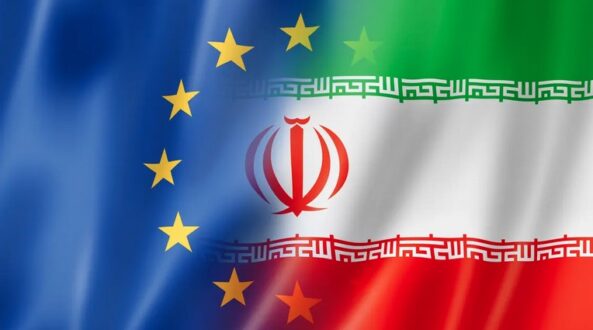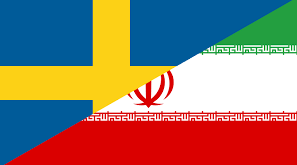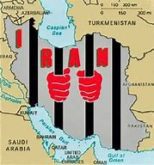Al-Monitor — The European Union has broadened its scrutiny beyond Iranian individuals and companies involved in the production of reconnaissance and attack drones to encompass international companies and other nations indirectly supplying components for Iran’s drone fabrication.
European security experts have told Al-Monitor that collaboration between Brussels and Washington on the issue has recently increased in a joint effort to block Iran’s drone production by destroying the supply chains of imported components and technologies.
On July 20, the European Council announced fresh restrictive measures, prohibiting the export of components used in drone construction and production from the European Union to Iran. This marked the fourth wave of drone-related sanctions targeting specific individuals and entities. Subsequently, European efforts in intelligence have shifted towards international companies and non-Iranian individuals engaged in the import of drone components.
On Friday, Switzerland announced it was tightening its sanctions against the Iranian drone industry, adopting sanctions similar to those announced by the European Union last July.
A Sept. 27 report by The Guardian revealed that European components were used for the fabrication of Iranian suicide drones used in recent strikes on Ukrainian cities. The report cited a document submitted at the G7 summit last August by Ukrainian authorities, claiming that hundreds of Shahed 131 and Shahed 136 drones used by Russia against Ukraine in the previous three months contained Western technologies.
The report claimed that 52 such components were discovered in the Shahed 131 model and 57 in the Shahed 136. The Guardian further said that five European companies, including a Polish subsidiary of a British multinational company, were named in the Ukrainian document as the original manufacturers of these components.
A Friday report by The Guardian revealed that the European Commission has warned European companies and European governments it could prevent the sale of certain dual-use components to Turkey and other countries from which Iran and Russia have apparently been purchasing parts.
Iran using “screen companies”
David Khalfa, the Africa and Middle East Observatory coordinator at the French think tank Foundation Jean-Jaures, specializing in strategic matters, emphasized the use of “screen companies” by Iran to procure drone components, often obtaining them from third countries with less stringent export controls compared to the European Union. Faced with American and European sanctions, Iran often uses such companies to buy components from countries such as Venezuela, Costa Rica, Kazakhstan or Vietnam.
“Europe lagged behind in the fight against the proliferation of Iranian drones. Truth be told, up until the Russian invasion of Ukraine, Brussels didn’t fully appreciate the danger represented by these inexpensive but disruptive and lethal weapons,” Khalfa said.
The Americans, he says, had identified the drone threat earlier, when UAVs were used in Iraq and in Syria. For Europe, it took the Russian war against Ukraine to realize the threat. While Europe had focused for years on measures to counter nuclear proliferation, Iran established a clandestine commercial network for purchasing components and knowhow for the fabrication of low-cost drones.
“Together with the United States, Europe is currently running against the clock, trying to prevent Iran from purchasing abroad the drone components they need — those they cannot or don’t know how to produce themselves. Often we are talking about double-use components, ones that you can buy almost freely on the market, which makes this race against the clock even more complicated,” he said.
“Europe is caught in an unequal equation. The European Union is spending millions of euros on air defense systems for Ukraine and also for improving their own air defense systems, while Iran and Russia use weapons that are cheap but very disruptive. Germany, for instance, has just signed a mega deal with Israel for the purchase of the Arrow 3 anti-missile defense system, but they are faced with drones that cost little to manufacture — 2,000 to 5,000 euros a piece — and that are difficult to detect because they fly so low,” He noted.
Khalfa says that the European intelligence agencies are working in tight cooperation with their American counterparts and also with the Israelis. In that respect, the presence of Mossad chief David Barnea at the meeting between Prime Minister Benjamin Netanyahu and Ukrainian President Volodymyr Zelenskyy in New York two weeks ago sent a strong message to Iran. It tells Tehran that the pro-Ukrainian alliance is wide, professional and efficient.
A senior European diplomat speaking to Al-Monitor on condition of anonymity confirmed that collaboration between Europe, the United States and other countries such as Israel has increased in recent months. He said that contrary to the nuclear proliferation dossier, on which Brussels and Washington do not necessarily see eye to eye, the European Union is completely mobilized against the Iranian drones, much like the Americans.
The diplomat said, “When Russia first started using Iranian drones, we focused our efforts, be it on the level of sanctions or intelligence, on the [Islamic Revolutionary Guard Corps] network. But our strategy changed. We are now focusing also on these screen companies operating across the Middle East, Africa, the Far East and Latin America, via people that are not necessarily Iranian nationals.”
 Shabtabnews In this dark night, I have lost my way – Arise from a corner, oh you the star of guidance.
Shabtabnews In this dark night, I have lost my way – Arise from a corner, oh you the star of guidance.



